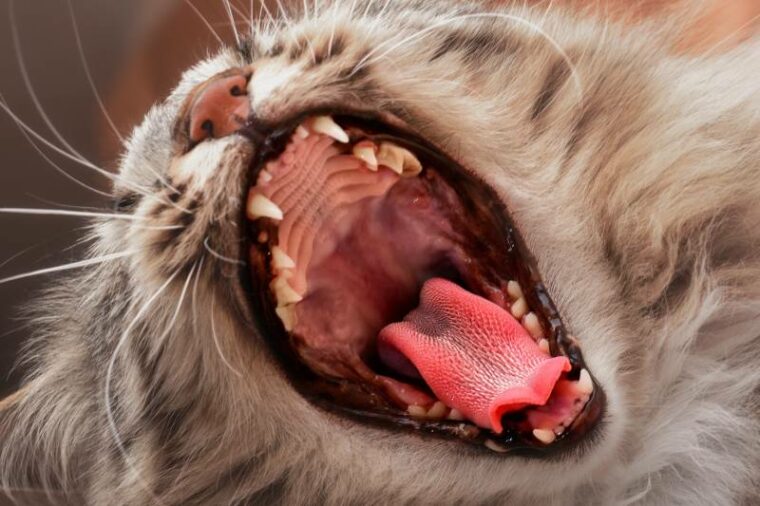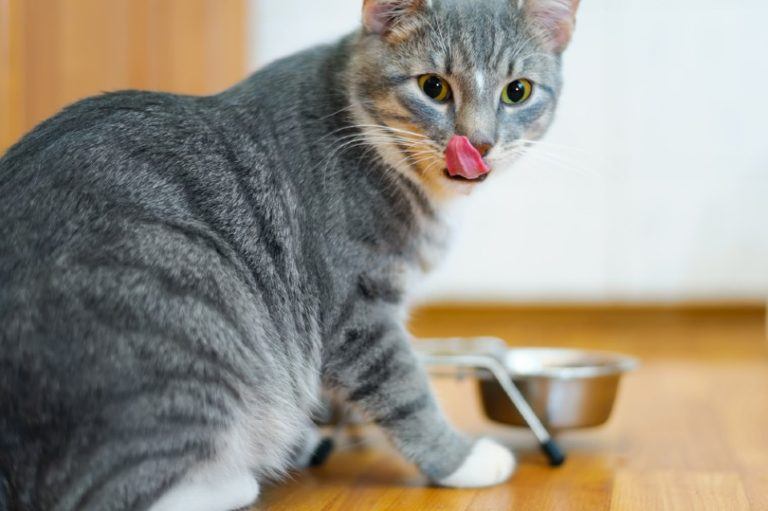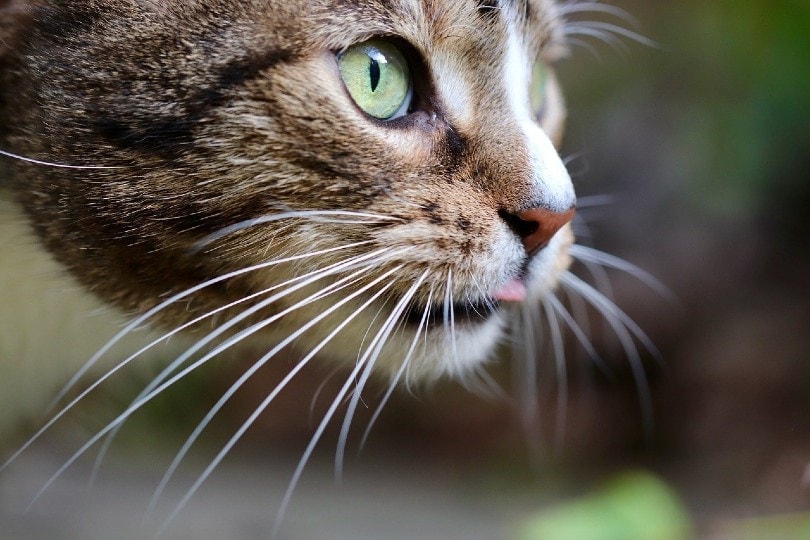
Click to Skip Ahead
Cats have stunning abilities in the olfactory department and can pick up scents that elude human noses. Their sense of smell is about 14 times more powerful than that of humans! People are primarily visual creatures who navigate the world using sight, but cats rely more on hearing and smell to get around.
They use smell to identify friends, find mates, and tell other cats that a particular area has already been claimed. Cats’ sense of smell is so acute because they have two scent organs: the nose and the vomeronasal organ. Keep reading to learn more about the feline sense of smell and how the vomeronasal organ works to give cats an edge when examining scents.
What Is the Vomeronasal Organ?
The vomeronasal, or Jacobson’s organ, sits inside cats’ mouths behind their tiny front teeth. It’s connected directly to cats’ brains and picks up and sends information encoded in pheromones and hormones to the brain to be interpreted.
The organ directs information to the part of cats’ brains responsible for interpreting clues related to reproduction, health, and territory. The scent molecules that hold these details are likely experienced by cats as a sense that’s somewhere between taste and smell.
When cats flare the sides of their mouths and stick out their necks, they draw air over their vomeronasal organs to get a better whiff of something interesting. The action is technically called a flehmen response, and it’s voluntary. Several animals have vomeronasal organs, including lions, sheep, and horses. It’s also commonly found in reptiles and amphibians.

What Do Cats Use It For?
The vomeronasal organ is primarily used to gather information about mating and territory. Cats use it to interpret chemical scent clues left by other animals. Pheromones contain important details about the cat’s health, mood, and reproductive availability.
They carry information about whether a cat is stressed out, eating well, or suffering from illness. They also provide markers that tell other cats that a particular territory has already been claimed. It’s also why cats like to rub against people and furniture around the house.
The chemical markers released by female cats in heat let other cats know about their reproductive availability. Kittens also use the organ in the days before their eyes and ears open to guide them to their mothers for warmth and food. They can identify their mothers largely through the sense of smell provided by this powerful scent organ.
When cats greet each other, they generally exchange a few sniffs; sometimes, they rub against each other and even smell each other’s rears to gather and exchange information contained in pheromones.
While cats use their vomeronasal organs primarily for sniffing out details about other cats, they also whip out the flehmen response and use their vomeronasal organs to get more information about anything that smells interesting, including people and even dirty socks.
How Strong Are Cats’ Other Senses?
Cats rely on taste, hearing, vision, touch, and smell to interpret and move through the world, and they have particularly strong abilities in the hearing and smelling departments.
Taste
When it comes to taste, humans have a slight advantage. Cats are generally not that interested in sweet things since they don’t have the receptors to enjoy the subtleties of carbohydrates, fruit, and grains that don’t form much of their natural diet.

Hearing
Cats’ hearing puts humans’ abilities to shame. They can hear at incredibly high frequencies and become actively stressed by sounds that appear ordinary to human ears.
Vision
Cats can see far better than humans when there’s little light, such as dusk, dawn, and moonlit nights. Because they have fewer cones than humans, cats often see in muted tones and can’t see objects close by terribly well. But they’re far better than people at picking up on subtle, fast movements such as those produced by scurrying small critters.
Touch
Cats also rely on their whiskers to gather information. Whiskers play an important role in balance, and cats depend on them to determine whether they have sufficient room to wiggle through small spaces. Whiskers also pick up air currents as cats move around and provide information cats use to understand and maneuver through physical space.

Frequently Asked Questions (FAQ)
Where Are Cats’ Scent Glands Located?
Cats have scent glands that give off pheromones located close to their cheeks, on their chins, and on the top of their heads. Their anal glands produce the information-filled chemical markers, and there are also scent glands on cats’ paw pads. When cats knead their favorite people and blankets, they release pheromones that create a sense of home.
How Do Cats Recognize People?
Cats primarily identify people by smell and sound. When they rub against people, they leave behind a bit of their scent, which combines with that of the individual to create a smell that cats use to identify their favorite humans.
Cats also rely on sound to identify their pet parents. Studies have shown that cats know it when their parents are calling their names; they just don’t bother to respond unless it suits them.
Why Is the Vomeronasal Organ Also Called the Jacobson’s Organ?
Vomeronasal organs are also called Jacobson’s organs in honor of the physician who first described the structure in published scientific literature, Ludwig Levin Jacobson.
Jacobson was born in Copenhagen in the late 18th century. He was also responsible for inventing a few innovative surgical instruments, including one designed to crush bladder stones.
Conclusion
Cats have two scent organs, which goes a long way toward explaining why they have such outstanding senses of smell. Vomeronasal organs are located in the tops of cats’ mouths, and they gather information from odorless chemical markers called pheromones that are primarily dedicated to communicating information about things like reproductive status and health.
When cats grimace and hold their heads out while sniffing, they draw air over their vomeronasal organs. These flehmen responses are voluntary and generally a sign that a cat finds something interesting.
Featured Image Credit: Nau Nau, Shutterstock







